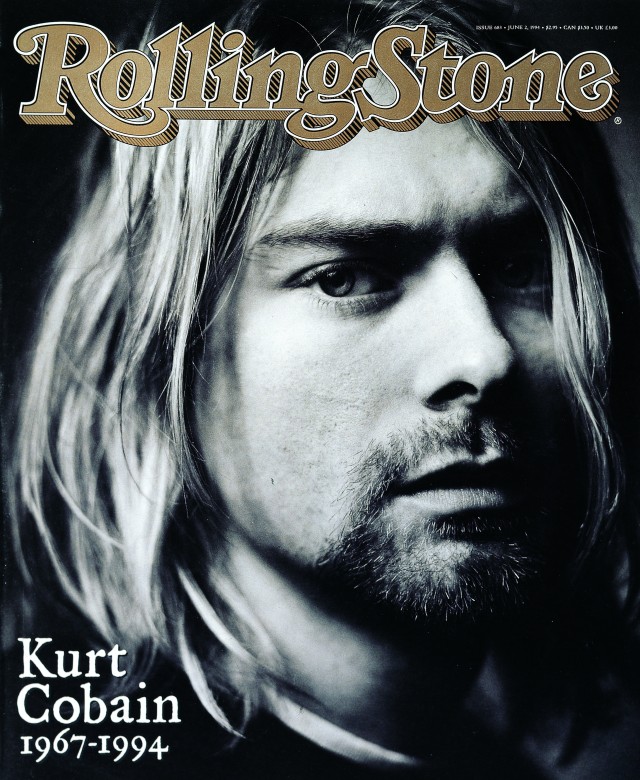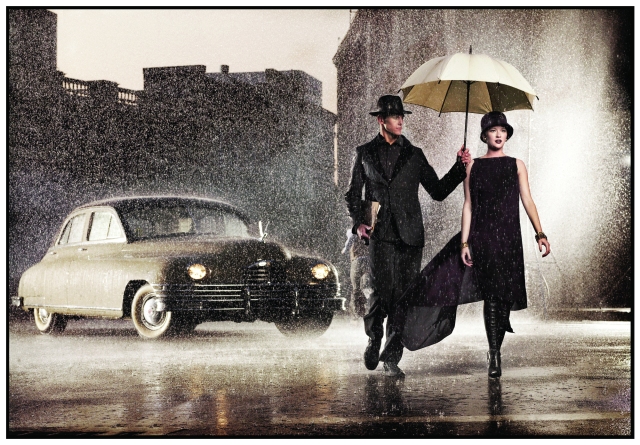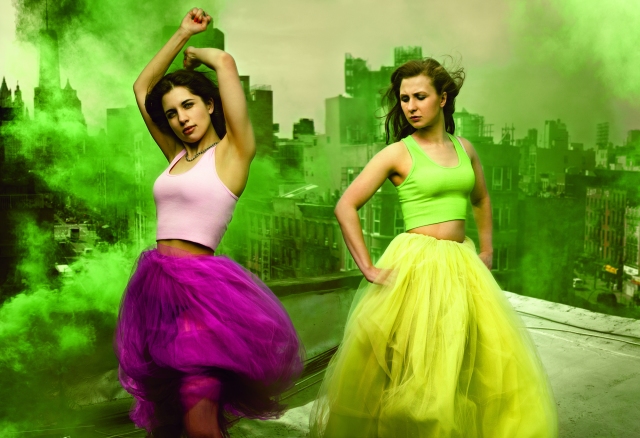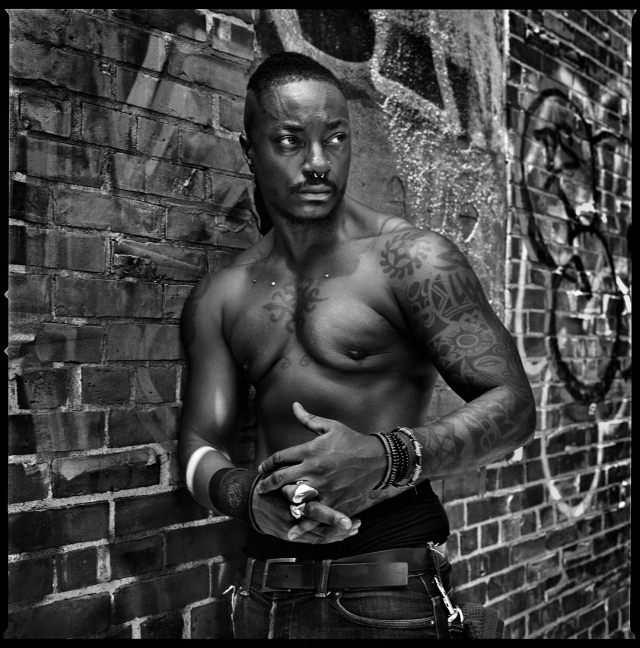By Anita Malhotra
Acclaimed portrait photographer Mark Seliger has photographed an impressive list of celebrities and public figures that includes Mick Jagger, Serena Williams, Nelson Mandela, Barack Obama and the Dalai Lama.
Starting his career with Rolling Stone in 1987, he served as the magazine’s chief photographer from 1992 to 2002. He then moved to Condé Nast publications, where he has shot covers for the magazines Vanity Fair, Elle, Italian Vogue and GQ, among others.
Mark Seliger has also released 11 books of personal work, the most recent of which is On Christopher Street: Transgender Stories. With a foreword by Janet Mock, the book features compelling black-and-white photographs of transgender men and women pictured on the iconic Manhattan street that has symbolized gay pride since the ‘70s.
The photos from the book were the subject of an exhibition in New York City last fall and are now being shown again, this time in Los Angeles at the Von Lintel Gallery. Anita Malhotra spoke with Mark Seliger, who was at his studio in New York City, by telephone on Feb. 1, 2017.

D’Jamel Young and Leiomy Maldonado featured on the cover of Mark Seliger’s most recent book, “Christopher Street: Transgender Stories” (photo ©Mark Seliger)
AM: How did your project Christopher Street first come about?
MS: I live in the neighborhood, on Charles Street, and I’ve always enjoyed the theater of that block. It’s almost like an Ellis Island for anybody who is in a place in their world where they’re exploring. It’s just very open. And over the last couple of years I’ve really noticed that that area has started to homogenize and gentrify.
So it started off as me shooting portraits of some of the neighborhood color and circus and fun, and re-introducing myself and asking people on the street if I could photograph them. And after about a dozen portraits, it became apparent that we were working on a more in-depth story specifically focused on transgender.
AM: Was there something in particular about the transgender subjects that interested you?
MS: It was very intuitive the way that it worked out. I think that makes the best kind of project, where you just spend time in one place and then you see what it becomes.
The most active and the most visually interesting moment on the street was a mixture of the normal theatrics of the area and a lot of very early morning people working the streets and on the streets. But also it’s obviously the hub of gay pride, and Christopher Street has a historical placement as well with the LGBT community and with Stonewall, so it really is a destination.
Fifty percent of my focus is always a process. So we were shooting with one kind of camera that I tested out and figured out that was what I wanted to do, and sticking with an environmental background on just one street. And then choosing black-and-white and just focusing on that.
AM: What camera were you using?
MS: A Hasselblad. It’s an analog, square-format camera I’ve had for many years.
AM: Was there a particular process you used to print the photos?
MS: We were printing on silver gelatin, so darkroom. Everything was done through an analog process.
AM: In your work for magazines, I believe you usually come up with a concept or an idea for a photo. How did you go about conceiving these portraits?
MS: The portraits are really done from the street. One of the alluring aspects for me was just go on the street and meet people and take their picture. Some of them didn’t last more than six to ten frames, and sometimes we shot two or three rolls on somebody.

The Stonewall Inn on Christopher Street was the site of 1969 riots that kicked off the modern USA gay rights movement (photo by Troy David Johnston, Flickr Creative Commons)
I really tried to focus on the idea that there was not any kind of casting or pre-production. It was really from a random experience. Sometimes I’d go out and tour around at night-time and try to find subjects and would never find somebody, and sometimes I would find three or four. Every day was different.
At the very end – to fill some of the spaces – we were introduced to a trans panel one night through one of our subjects and we met some of our trans men. And that led us to getting to know some other men. The trans men were much more difficult to connect with on the street because there’s nothing that you would register as female.
AM: In your book, the portraits are accompanied by stories. How did you get these stories?
MS: It was just about the photographs at first, but once we got to know our subjects a little bit better I did interviews with half of them and we took those interviews and built transcriptions in order to accompany the photographs in the book. The exhibition doesn’t have the caption information or the stories. The book does. And we also included in our presentation a short 20-minute documentary of the interviews.
AM: What did you learn about the transgender experience through your project?
I feel like there’s an incredible misunderstanding of the personal journey that people go through in order to be able to feel like they’re in the right body. It’s obviously a very difficult and important step to have the self-respect and the depth and the determination and the commitment to be able to do that.
The other thing I learned is that my subjects, for the most part, were all very willing subjects. It was the first time they’d ever been seen in this new form – somebody that would get to know them and be interested enough to go and take a picture and talk to them about it.

Carmen Carrera (R) with her husband Adrian Torres and their daughters as photographed by Seliger (photo ©Mark Seliger)
AM: What have the reactions been to the book by the people you photographed?
MS: I think some of them were a little surprised that we kept it very honest. We didn’t Photoshop or change the way that somebody looked in any way whatsoever. They’re very raw pictures and a lot of my subjects were honored and fine with it, but at first they were a little bit surprised how honest they were.
AM: What kinds of reactions have you had from the public?
MS: We did a show in New York that was unannounced and unadvertised and we had 500 to 800 people walking through there a day. The thing I realize is that everybody has a trans story like, “My best friend’s daughter is going through this.”
Actually my lawyer, who’s 80 years old and who helped me with the book project, looked at me after going through the book and goes, “my great-nephew used to be my great-niece.”
So I was really tickled with the way that people responded. It’s all about being open in your own mind to the way the somebody feels about themselves. Maybe it does open questions in terms of our own bodies and our own self-discovery, but for the most part it’s about somebody else and you have to be tolerant of something that needs to be shared and obviously created.
AM: Tell me about the exhibit that is currently showing in Los Angeles.
MS: We’re doing a show with Tarrah von Lintel, who’s a wonderful gallerist in Los Angeles who really wanted to do this show and who also has just transitioned. She just loved the work and we’ve gotten a lot of really good feedback on the relationship of the work within the gallery. It’s a beautiful, beautiful space. So we’re very honored to be there.
AM: In terms of your overall career, how did you develop your interest in photography when you were first starting out?
MS: As a kid I was really more interested in printing. I learned the simplicity and the process of photography through the darkroom. And then eventually I went to a small state school, and in my third year at school I met my mentor James Newberry, who was teaching documentary and print-making. And that was when I started to develop the idea of portraiture.

Barack Obama photographed by Seliger for Rolling Stone magazine in 2012 just before beginning his second term as president of the USA (photo ©Mark Seliger)
AM: You have had and are having an amazing career as a Rolling Stone photographer and also with Condé Nast.
MS: Well, I worked with Rolling Stone for 10 years as their chief photographer. And then I moved to Condé Nast and I worked for Vanity Fair and GQ exclusively for them for 10 years. And now I work for both places.
I’m enjoying the fruits of working for lots of different people and lots of different editors. I work very closely with Jann [Wenner] and Jodi [Peckman] at Rolling Stone, and I work with Graydon Carter and do a little bit of work with GQ and Fred Woodward still. I do fashion work and I do my own work – just kind of immerse myself in what’s out there. Magazines are obviously changing all the time, so it’s an ebb and flow.
AM: What are some of the highlights from your career as a magazine photographer?
MS: There are so many amazing experiences I have had in terms of making pictures. I think if people were to ask about a couple of highlights I would say probably working with Obama was interesting – going to the White House. An experience working with a president is always pretty memorable. Then working with the Dalai Lama.
One of the earlier Rolling Stone things that I did that got my foot in the door was a twenty-fifth anniversary portfolio, which was a series of 15 or 16 photographs that celebrated the 25 years of Rolling Stone. That was amazing.

Musician Kurt Cobain was photographed by Seliger and featured on the cover of Rolling Stone magazine in a special memorial issue following Cobain’s death on April 5, 1994 (photo ©Mark Seliger)
And the last ten years I’ve been doing some fashion work and I had an incredible couple of experiences working for Franca Sozzani, who just passed away, for Italian Vogue, and shooting couture during French Fashion Week and seeing that world, which was so fresh and unusual as well.

Actress Gretchen Mol photographed by Seliger in 2007 for Italian Vogue in 2007 (photo ©Mark Seliger)
Working with legends in the music world has always been a great benefit for me just because – like a lot of people – I really enjoy music. So to go and photograph some of my heroes has been a highlight as well, like Neil Young and Bob Dylan and George Harrison, Joni Mitchell. That’s been a fantastic route.

Rolling Stones guitarist Keith Richards photographed by Seliger in 2011 for British GQ magazine (photo ©Mark Seliger)
AM: What do you think are the qualities that helped you to be successful in this field?
MS: I think that portraiture is a fine balance of unveiling or revealing somebody when there’s an in-between moment.
What we try to do is capture not only a visually provocative feeling within the photograph, meaning something that has a balance of composition and design and lighting and photography, but also one that really is significant of who these people are.
So I think great portraiture is really about, without sounding corny, essence and craft.
AM: Is there someone that you have not photographed yet that you would really like to photograph?
MS: There’s lots of people. Unfortunately a couple of them have passed. I never photographed Prince, I never photographed Michael Jackson in terms of entertainment. Both were obviously legends.

Two members of the feminist punk-rock group Pussy Riot photographed by Seliger in 2014 for Vanity Fair magazine (photo ©Mark Seliger)
It seems like there may be a new, fresh take on the world in terms of people getting more energetic about not only political figures, but leaders. But I’ve also been really interested in photographing the way that the earth is changing and the way it shapes our indigenous world as well. Everything is a project – it just takes time.

Comedian, actor and producer Jerry Seinfeld as the Tin Man from the Wizard of Oz featured on the cover of Seliger’s 1999 book “Physiognomy” (photo ©Mark Seliger)
AM: What projects do you have coming up in the near future?
MS: We’re still working on getting this book complete and moving through that. I’m kind of shaping some ideas for a next project and getting ready to lay out a possible anthology of 30 years. So that will be next year for me – editing and shooting.
We pretty much spend our weeks working on our commercial work and just kind of balancing out both worlds so that we have the resources to be able to do the other work.
Mark Seliger’s exhibit On Christopher Street: Portraits opened on Jan. 14 at the Von Lintel Gallery in Los Angeles and runs until Feb. 25, 2017. For more information about Mark Seliger and his work, please visit markseliger.com.










Interesting! Thanks ;l
LikeLike
Great article, Anita. I hadn’t heard of this guy before, although I would venture to say I’ve seen many of his photographs over the years. Always interesting subjects and interviews.
LikeLike